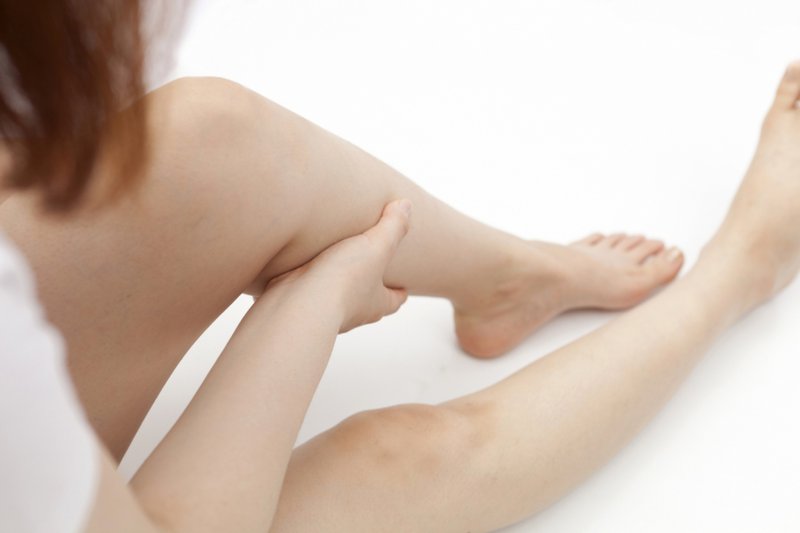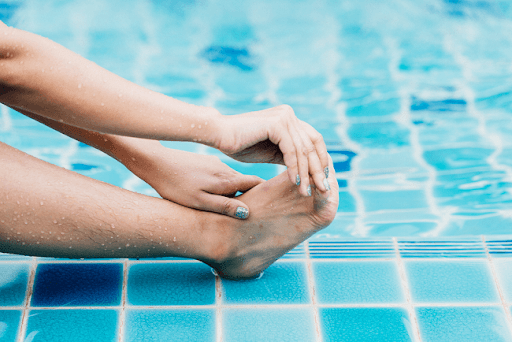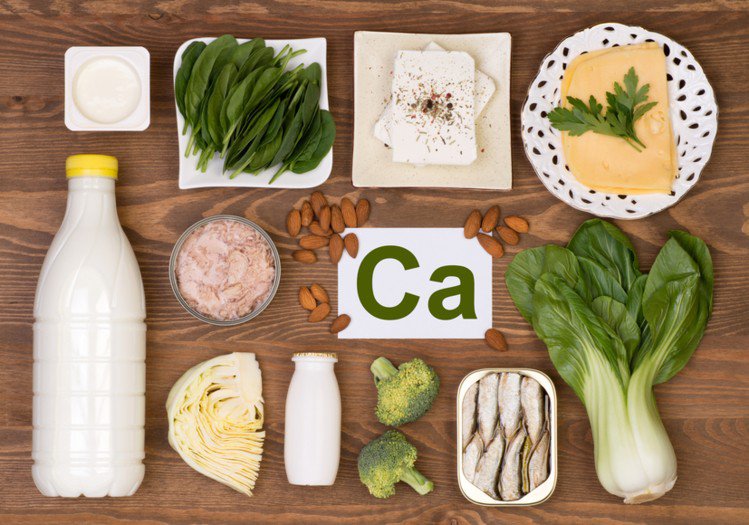- Home
- Knowledge
- Swimming skills
- Detail
You get cramps while swimming - How to fix this phenomenon immediately?
Whether you are a beginner or a professional athlete, it is difficult to avoid cramps. Cramping while swimming causes many troubles, not only affecting the swimming process, but also causing swimming accidents and even drowning. So why do cramps occur underwater? How to fix? What to note to limit this situation? Join doboinam.vn to find out through the article below.
Why do cramps occur when swimming?
Cramps are a phenomenon that occurs when muscles contract suddenly, arising out of the body's control. This phenomenon causes severe pain in the muscles and makes the person unable to move. Cramps can occur anywhere in the body. However, it often appears in the legs: calves between the knees and ankles, thighs, hips, feet; Appears along the hands and abdominal muscles.

Cramps cause sudden painful contractions
Causes of cramps when swimming:
There are many different causes that cause cramps when swimming . Some typical factors:
- Dysfunction of the autonomic nervous system.
- The body lacks calcium, magnesium, and potassium
- Body fatigue, dehydration, electrolyte imbalance
- The body sweats a lot, causing salt loss.
- Muscles have to move and work a lot, leading to lactic acid accumulation in the muscles.
- Anxiety and stress
Consequences of cramps:
Cramps that arise suddenly make swimming dangerous. Cramps cause pain that not only affects the ability to swim, but swimming distance is shortened. And more seriously, if not detected promptly, it can lead to drowning.

Cramps cause pain that affects the swimming process
How to deal with cramps while swimming?
1. Stay calm, don't panic
When you encounter a sudden cramp while swimming , even if it affects your psychology, you panic. But you need to stay calm to ask someone to save you or give first aid yourself. At this time, if you are on the water, shout loudly for help. If you are in water, relax, breathe deeply to help your body float, then call for help.
2. Absolutely do not struggle in the water
Many people, when they have cramps, panic and often struggle to escape. However, struggling only makes you sink into the water faster, losing more strength. Not only that, struggling will also make the cramping muscle more painful, making you even more panicked. At this point, what you need to do is calm down, relax so your body floats, move your legs slightly so your body floats to the surface.
– In case no one comes to save you in time: Try to stretch and massage the cramped area, gently moving that muscle area. If you feel better, swim to shore immediately.
– If you have cramps in your calves: You need to get up so you can straighten your legs, tiptoe or stand on your heels to stretch your muscles. Remember to straighten your legs and wait for help to arrive.
– If you have cramps in your thighs: First, sit down, ask someone else to help you pull your legs straight, then lift your heels up, then use your hands to press your knees down firmly.

Supplement vitamins, minerals, and calcium to avoid cramps when swimming
Measures to prevent cramps when swimming
Besides understanding how to handle cramps, you need to understand the measures and follow the principles below to avoid cramps underwater:
– Warm up the necessary movements thoroughly before entering the water. In particular, warming up with stretching exercises will help you a lot when swimming.i
– Adequately replenish the body with water and electrolytes before, during and after swimming. You can supplement with specialized sports drinks, coconut water, oresol,...
– Supplement adequate nutrition for the body: vitamins, minerals, calcium, potassium from fruits.
– Lack of exercise or sitting a lot is also the cause of cramps when swimming . Therefore, you should exercise regularly to exercise flexibility and endurance while avoiding cramps.
With dangerous consequences when experiencing cramps while swimming . With the experiences shared above, we hope to help you equip yourself with more knowledge and experience in handling cramps effectively in all cases, avoiding unwanted incidents that may occur.









